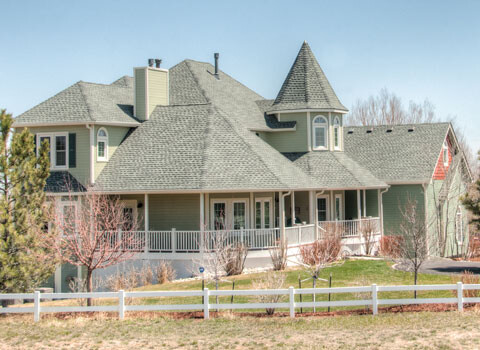Hail forms in a variety of shapes and sizes, many of which cause damage to roofing and other exterior components. Contrary to popular belief, hail damage is often impossible to discern from the ground and can require a close inspection to identify, particularly during the period immediately following a storm event. A roof can sustain hail damage regardless of its age or condition. Although a roof can take years to begin leaking from storm damage, insurance coverage is payable upon identification of damage. Most insurance companies enforce time limits in which claims can be filed to avoid liability for additional interior damage expenses from leaking storm damaged roofs. The insurance carriers prefer a qualified professional contractor to verify damage before a claim is filed to prevent unnecessary claims. Advanced Exteriors, Inc. Project Managers are trained to identify storm damage in accordance with industry standards and are available to provide a comprehensive analysis without cost or obligation.
See our Insurance Claims page for information on how we can help you or call us today to schedule a free inspection!
How Are Roofs Affected By Hail Damage?
Asphalt shingle damage can be seen as indentations and/or fractures in the shingles surface, commonly referred to as bruises or dimples. Although granule loss can occur from normal aging or shingle failure, it is usually the most obvious indication of shingle damage and can accumulate in gutters and downspout drainage areas. After some time, clusters of granules continue to come off (at the point of impact) in a random pattern throughout the slope which exposes the asphalt and underlying fiberglass mat. Ultraviolet rays exacerbate this process and can transform a minor shingle bruise into a hole over time. Hailstones vary in size, shape, and hardness and can create small dents/depressions or even tear through shingles, oftentimes affecting some roof slopes differently than others. Indentations can occur on metal flashings, siding, chimney caps, or even skylight flashings, but their absence does not inherently disprove damage elsewhere on the roof. Wood shake roofs experience pitting and splitting with occasional holes in the shakes. Tile roof systems, while heavy and durable, are subject to cracking and puncturing from hail but are normally unaffected by stones smaller than the size of a golf-ball.
What Can Be Done to Avoid Future Hail Damage?
Manufacturers have been developing roofing shingles that conform to Underwriters Laboratories test standard UL 2218, which classifies the resistance of a particular product to hail damage. To test impact resistance, industry professionals drop a steel ball on roofing products to observe the damage and rate the levels of resistance. Class 4 is the best rating and is the most resistant to hail damage, while the Class 1 rating is the least resistive. Insurance companies are taking notice of these class ratings and some offer premium reductions when Class 4 shingles are used. Advanced Exteriors, Inc. can offer lifetime warranted Class 4 materials with up to 25-Year workmanship warranties, as well as provide information on the pros and cons of impact resistant roof systems. Call today to schedule a free consultation with one of our Project Managers to help determine which roofing system is best utilized for your project.
Click below to find out more information on other kinds of damage and what to do to protect yourself and your home

